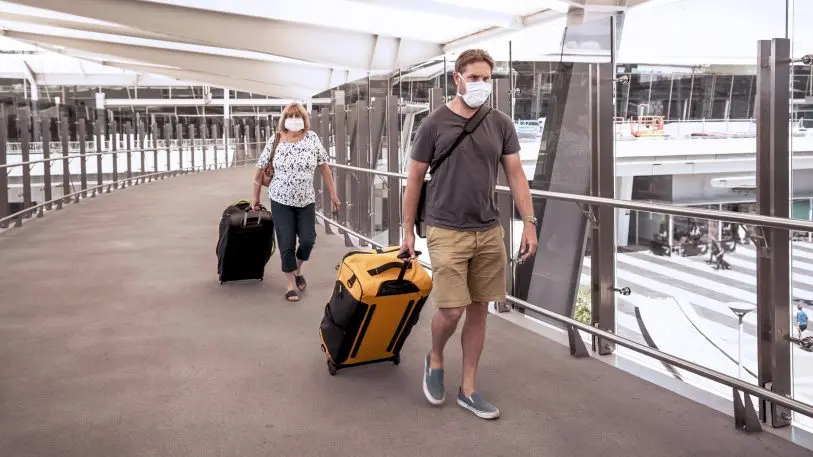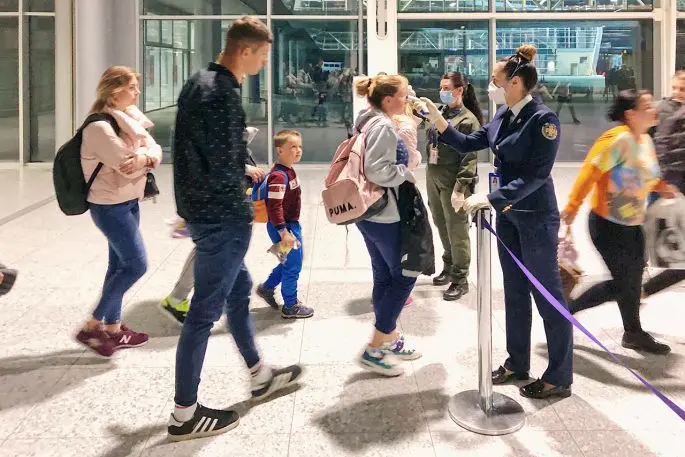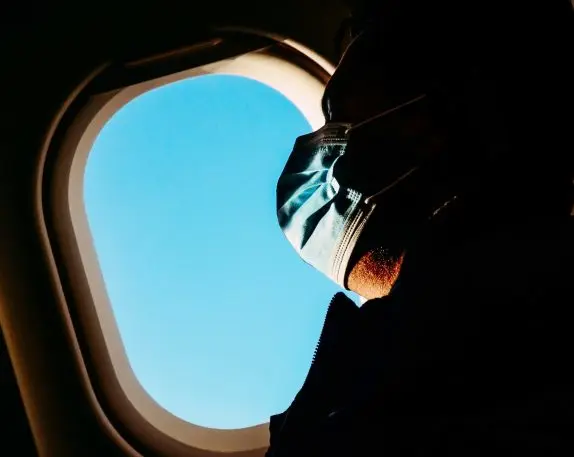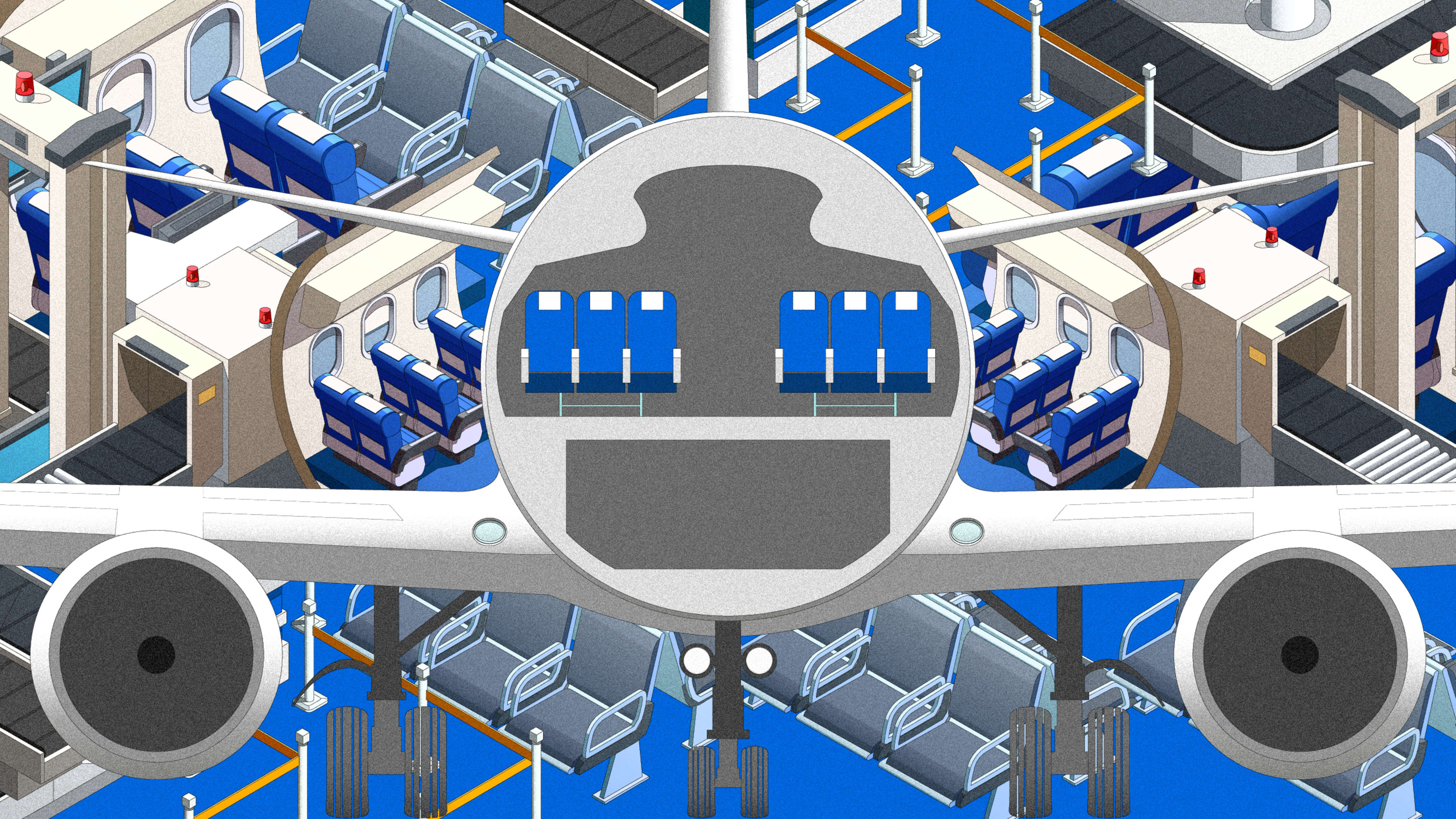Cruise ships offer a deadly petri dish for COVID-19 to spread, but air travel doesn’t seem to be all that wise either. Airports are full of cramped lines. Planes have built their entire business model on packing as many people as possible into a small space that’s filled with recycled air. And, of course, a single infected person flying from one city to another can spread a pandemic, too.
But air travel also makes up $2.7 trillion of global GDP, which means, like much of the world that’s reopening even when it shouldn’t, airlines are planning their comeback. The International Air Transport Association (IATA) is a trade organization that represents 290 airlines globally, which covers 82% of all air traffic. This week, the group shared a 21-page biosecurity road map to resuming operations. The road map isn’t finalized, and it’s not necessarily sanctioned by any governing body that matters. But given the IATA’s position, this report is our best look at just what the industry is planning for its comeback, and what we can expect if we fly in the age of COVID-19.
We read the report to get past the fluff for you. Here are the highlights on what may change the next time you fly.

1. You’ll do more before going to the airport
The IATA wants to minimize the time that people are at the airport, period. And as part of that initiative, it suggests that passengers should be able to do even more of the check-in process at home. It is asking world governments to enable more electronic registration for visas and other travel documents. But even simpler tasks will change. It goes so far as to suggest people will begin printing tags for checked bags themselves, rather than doing so at check-in.
2. You’ll deal with temperature screenings and be jealous of immunity passports
Before entering an airport terminal, you’ll need to have your temperature taken (presumably by a contactless infrared thermometer that scans your forehead). Fun! You’ll also encounter a temperature screening when you land at your destination.
But the IATA suggests that it’s possible, in the future, for a quick COVID-19 test to screen every passenger to allow whole terminals to be deemed sterile. Likewise, should governments embrace “immunity passports,” the IATA says they would “play an important role.” What exactly? We picture TSA PreCheck line skipping for the immune, but that’s just a guess.
3. You’ll stand in socially distanced lines
Whether it’s a line to get your temperature taken, or a line to go through security, or the line to board the plane, the IATA is suggesting 3 to 6 feet between people. On paper, this is a simple enough proposition. In practice, these snaking, packed lines will need considerably more space to operate. Anyone who’s seen airport lines going through doors and around escalators can picture how quickly this situation could go wrong.

4. You’ll probably check your carry-on
That line to get onto the plane, in particular, is a tricky proposition. The IATA suggests that airports and governments will need to redesign gates simply to allow people to get onto the plane. One thing that looks more certain, though, is that carry-on bags will be limited to expedite and smooth out the boarding process. In other words, you’re going to have to check more bags than you’re used to. Will airlines offer free checked bags again?
5. You’ll social distance everywhere . . . except inside the actual plane
“Based on information we have analyzed, the risk of transmission of COVID-19 from one passenger to another passenger on board is very low,” the IATA writes, citing how planes use HEPA filters to scrub the air dozens a time an hour, and people already sit forward instead of toward each other.
At least one expert begs to differ, as a passenger’s breathing still spreads rows across the cabin before it’s filtered. But the IATA’s stance is firm, and very much in line with the financial interests of the airline industry, which aims to pack more people on planes: “Physical distancing on board (e.g., through blocked seats) is not necessary,” the group writes. The IATA isn’t recommending middle seats be left vacant, or passenger seating in any way be limited. They do recommend passengers wear masks, but it’s not mandatory.
6. You could be flagged on the plane if you’re symptomatic
So say you are allowed on the plane because you don’t have a temperature, but you end up coughing up a storm when you get on. Flight attendants will be trained to screen for COVID-19 in flight, and will be tasked with “management” of the problem. What does that management look like? The infected passenger would be asked to wear a mask, then separated from others by 3 feet, or about one seat, in every direction (space permitting, which seems impossible on a packed flight). They get their own dedicated bathroom if possible, and a single crew member will be assigned to see to their needs. To be honest, this sort of treatment on a commercial flight sounds . . . posh?

7. You might be offered complimentary sterilizing wipes for your seat
Oooh! Free stuff!
8. You’ll grab your bag more easily
Here’s a subtle, small win for bag checkers everywhere: The IATA suggests that, to expedite and allow social distancing for bag pickup, the airlines utilize the maximum number of conveyor belts. In other words, say goodbye to elbowing for what might be your black roller bag amid three flights of other passengers doing the same thing, all while half a dozen baggage claims stand nearby completely unused.
Recognize your brand’s excellence by applying to this year’s Brands That Matter Awards before the early-rate deadline, May 3.
